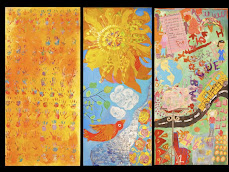 During this time of appallingly bad buys in the stock market, I thought it might be worth taking a look at an area where there are still colossally good buys to be had. A study published this month examines the impact of the World Health Organization’s “Global Programme to Eliminate Lymphatic Filariasis.” Amazingly, 20 percent of the world’s residents (1.3 billion people) are at risk from the disease, which is transmitted through mosquito bites. Nearly 120 million are currently infected and 40 million are seriously debilitated by the disease. In the past seven years, the WHO program saved an astonishing 32 million DALYs (Disability Adjusted Life Years – the gold standard for a public health intervention). That includes 6.6 million children who never got the disease thanks to treatment and another 9.5 million infected patients spared from its more debilitating effects. You can therefore imagine why lymphatic filariasis treatment and prevention has been called a best buy in public health.
During this time of appallingly bad buys in the stock market, I thought it might be worth taking a look at an area where there are still colossally good buys to be had. A study published this month examines the impact of the World Health Organization’s “Global Programme to Eliminate Lymphatic Filariasis.” Amazingly, 20 percent of the world’s residents (1.3 billion people) are at risk from the disease, which is transmitted through mosquito bites. Nearly 120 million are currently infected and 40 million are seriously debilitated by the disease. In the past seven years, the WHO program saved an astonishing 32 million DALYs (Disability Adjusted Life Years – the gold standard for a public health intervention). That includes 6.6 million children who never got the disease thanks to treatment and another 9.5 million infected patients spared from its more debilitating effects. You can therefore imagine why lymphatic filariasis treatment and prevention has been called a best buy in public health.
Don’t feel too bad if you don’t know what lymphatic filariasis is. Commonly known as elephantitis, it is one of a suite of lesser-known ailments that includes schistosomiasis, trachoma, leprosy, and soil-transmitted helminths, which affect billions of people in South America, Africa, India and Southeast Asia. Elephantitis is among the most grotesque and terrifying of the diseases, though relatively easy to treat and prevent.
Though massively widespread, the neglected tropical diseases can be defeated with a more modest investment than it takes to fight pandemics like AIDS and tuberculosis. Ironically, because they are less well-known and potentially easier to fight than more well-publicized scourges, they have always been shunted off to the side of the global public health agenda – so much so that this has given them their name: neglected tropical diseases.
Fighting these diseases is a challenge, but it also represents an enormous opportunity, one that we can’t afford to miss. Gains made against AIDS and TB are often made “uphill.” We can get medication and treatment to those suffering from HIV/AIDS, but what good is that if patients are suffering from other disorders that reduce the effectiveness of that medical attention? Further, the treatment of these diseases requires more follow-up and attention than the fight against neglected tropical diseases.
Both the World Health Organization and the Centers for Disease Control and Prevention identified these diseases as “targets of opportunity” in the battle to improve global health. Thankfully, efforts against some of these diseases are not just gearing up, they are gaining significant traction.
This success is the product of what’s been called the most rapid scale-up of a drug program in the history of public health. It could also become the largest program of its kind in public health history: so far, over 1.9 billion drug treatments have been administered to more than 570 million people in 48 countries.
This program shows what’s possible when the funding needed to fight these neglected-though-conquerable diseases is put into the hands of organizations that have the will to use it effectively. This kind of program is vitally important, because it’s so unlike what we’re used to seeing. This isn’t an effort to mitigate the effects of a disease, and it isn’t finding the cause of a disease. If followed through to completion, it is nothing less than the complete eradication of a disease. Lymphatic filariasis could go from being a threat to more than a billion people to being simply an interesting epidemiological footnote in a few years.
Given the success against this one neglected tropical disease, we shouldn’t hesitate taking on the rest. Beating these diseases is within our grasp, and it could be the most cost-effective investment we’ll ever make in global public health.Dr. Josh Ruxin is a Columbia University expert on public health who has spent the last couple of years living in Rwanda, where he administers the Millennium Villages Project in Mayange. He’s an unusual mix of academic expert and mud-between-the-toes aid worker. His regular posts can be found on the blogroll of Nick Kristof of the New York Times, and he has given his permission to be cross-posted here. Josh and EGR executive director Mike Kinman team-teach a global poverty module for Trinity, Wall Street's Clergy Leadership Project.






















